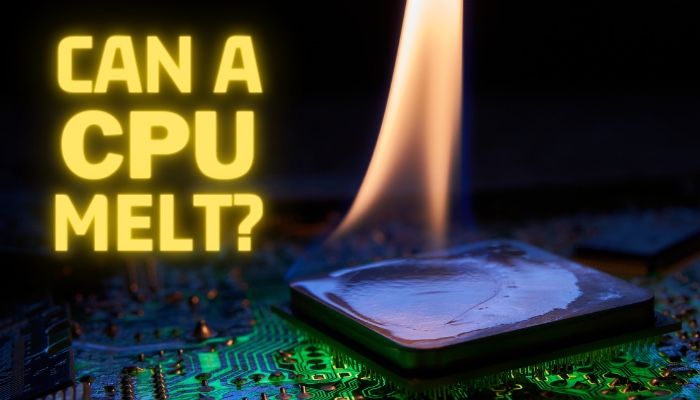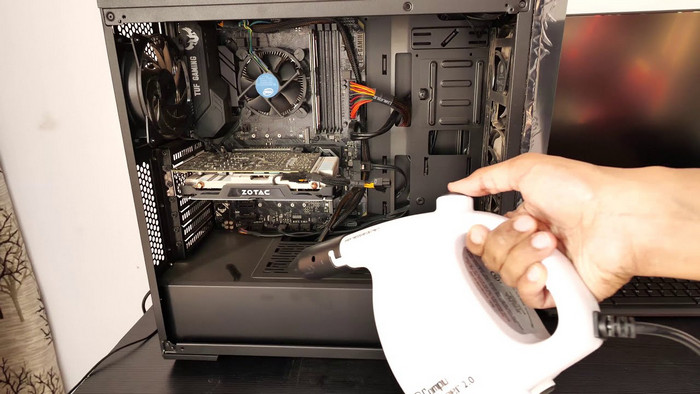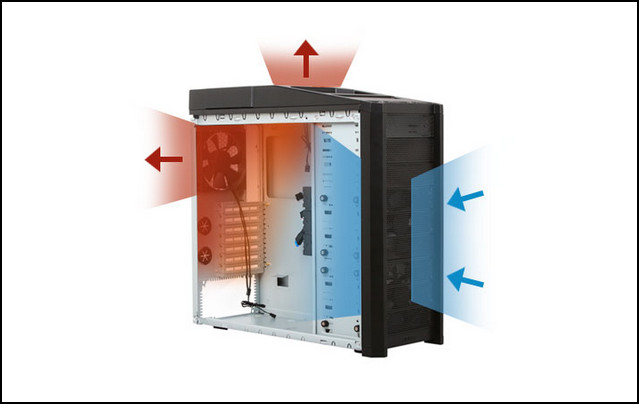While talking about the CPU, it’s not a single material; instead, the CPU consists of several raw materials.
And obviously, each material has different melting points. Melting some materials may need colossal heat compared to other materials.
So, can you melt a CPU? Well, in this article, I will answer all queries regarding the CPU melting issue.
Tag Along!
Can Your CPU Melt?
No, it’s entirely impossible to melt computer processors from overheating. Modern computers have thermal sensors to prevent CPU overheating. These sensors can detect the temperature and control the heating by lowering the voltage whenever the temperature rises too much.
However, in the early days, when the manufacturers didn’t introduce the auto voltage and shutdown feature for overheating, melting the CPU with other parts was a common issue.
For instance, the AMD K6 microprocessor, launched in 1997, gets melted from overheating within 10 seconds. Despite that, AMD fixed the issue within a short period after getting CPU melting reposts from users. 
Usually, a CPU can effortlessly handle 80–85 °C. Running a CPU higher than 90 °C for several hours can permanently damage it.
A processor consists of silicon, copper, aluminum, and various plastics materials. The melting point of silicon is 1414 °C, and the melting point of copper is approximately around 1000 °C.
So it’s clear that your CPU cannot produce enough heat to melt the raw materials of the processor. However, you may melt some plastic materials due to overheating, but the computer will shut down before reaching that temperature.
Occasionally, a heat sink can melt into the CPU because the AMD processor is hot glued to the IHS (Integrated Heat Spreader), and overheating can attach both parts. Running a CPU without a heat sink can also melt the processor.
What is Needed to Make a CPU Melt?
You cannot melt a modern processor by overheating because the CPU has built-in thermal protection that restricts it from producing enough heat to melt the CPU itself. When the processor overheats, the system starts throttling, and at some point, it will crash.
So, how to melt a CPU?
Well, you must remove the CPU from your computer and start heating it with a Heat Gun. For instance, the NETTA 2000W Heat Gun can produce around 600 °C. 
This vast temperature can entirely burn the CPU and even melt some parts. Though the CPU overheating cannot cause fire, a power surge or malfunctioning laptop batteries can sometimes create a fire that can melt the CPU.
Sometimes, CPU overheating can cause lag or even cause a shutdown. Avoiding CPU overheating can extend the processor’s lifespan and constantly perform with high efficiency.
What Causes CPU Overheating and How to Prevent it?
Several reasons can cause rapid CPU overheating, such as faulty cooling fans, excessive background running processes, improper airflow, and overclocking. Preventing overheating is easier by turning off overclocking, cleaning dust, improving airflow, and so on.
Here are the methods to prevent CPU overheating:
1. Turn Off Overclocking
Overclocking increases performance, but it causes overheating. Overclocking can often damage the CPU.
If you are facing CPU overheating, ensure to turn it off. You can effortlessly check if the CPU is overclocked and turn it off anytime.
2. Clean the Dust and Debris
 Cleaning the CPU cooler and fans is essential because dust can reduce fan speed and it will affect the heat management system.
Cleaning the CPU cooler and fans is essential because dust can reduce fan speed and it will affect the heat management system.
You should clean your computer once every six months at least. Ensure the cooling fans are cleaned to get the best performance from your CPU.
3. Improve Airflow
 Optimal airflow is the key to the finest performance. If you place your computer in the corner of your room, it may lack proper airflow and lead to overheating.
Optimal airflow is the key to the finest performance. If you place your computer in the corner of your room, it may lack proper airflow and lead to overheating.
So, ensure the computer is placed where it gets proper airflow. If you use a laptop, place your device on a flat surface and use an extra laptop cooler to manage the overheating more efficiently.
4. Close Background Applications
Multiple apps running simultaneously in the background can stress the CPU and produce a ton of heat. So, you should stop apps running in the background to resolve the overheating issue.
Frequently Asked Questions
How hot can a CPU get before melting?
In general, a CPU runs smoothly at 85 °C and can efficiently handle up to 90 °C if the CPU is overclocked. However, when a CPU produces over 105-110 °C, some plastic components may start to melt.
What temperature can damage a CPU?
A sustainable CPU temperature is 80–85 °C. If the CPU runs above 85 °C for several hours, it will damage the CPU and reduce the CPU lifespan.
What happens if a CPU gets too hot?
Using a CPU at a higher temperature for a more extended period will decrease the lifespan, show lag, crash, and even shut down the computer to prevent significant damage.
Wrap Up
Melting a CPU is unfeasible because you must bypass the thermal protection built into the CPU. And it’s unattainable to bypass the CPU thermal protection.
However, if you figure out a way to bypass the thermal protection, you may be able to push the CPU to a melting point.
That’s all for today. Feel free to mention your additional queries in the comment section.




